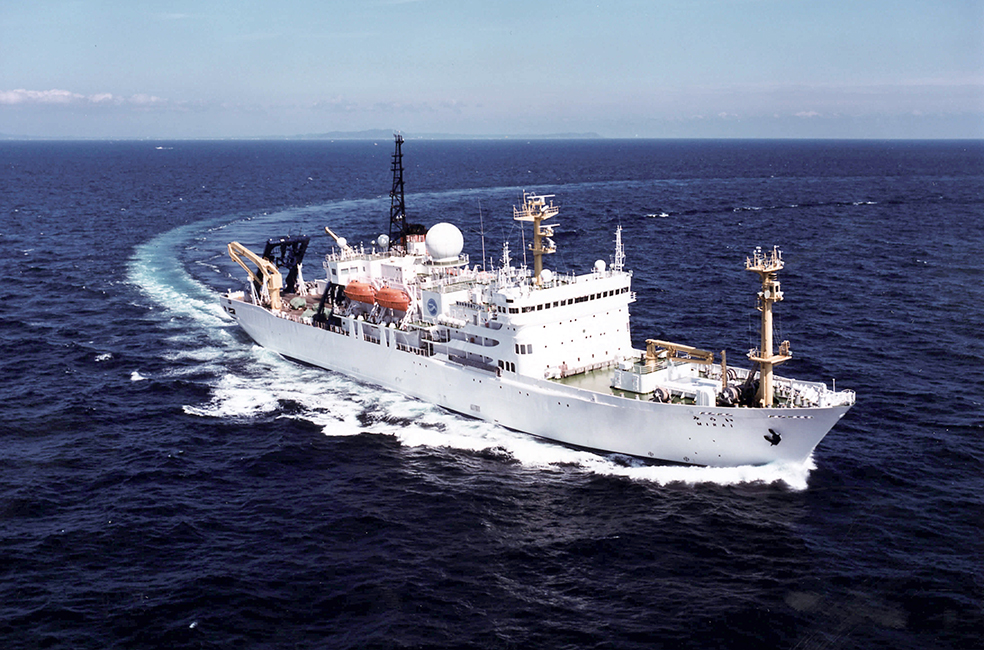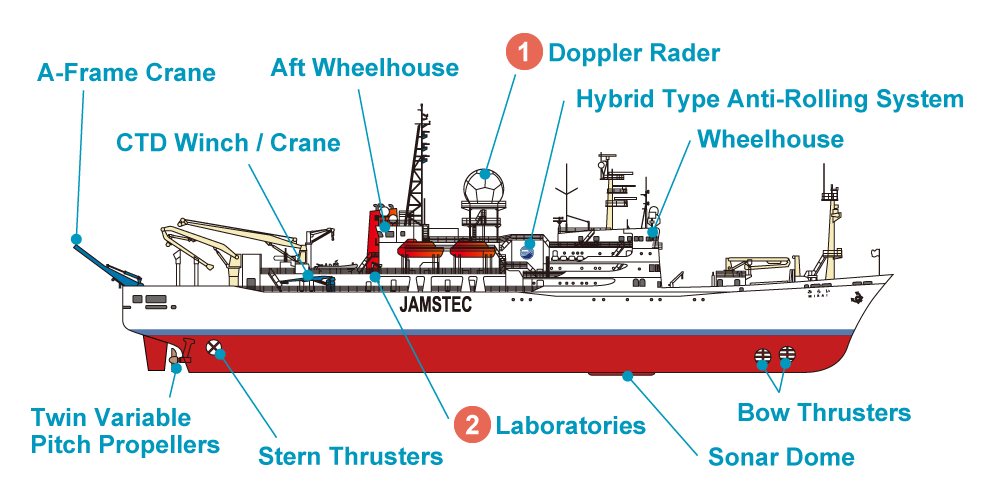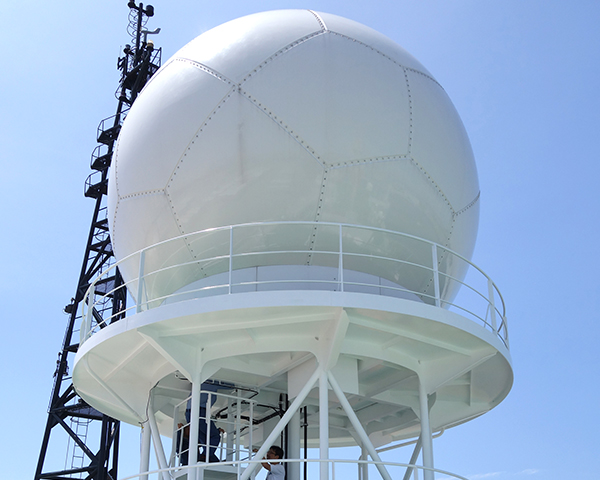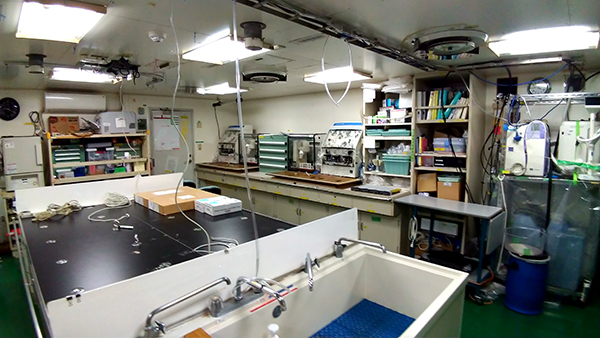RV Mirai
Arctic-to-Tropic Research Vessel
Mirai ’s first incarnation was as Japan's first nuclear-powered ship: Mutsu; the ship was renamed Mirai after the hull was cut, the nuclear reactor removed, and the rear part of the ship rebuilt. The ship's excellent ice-resistant performance allows it to operate in polar regions, and its hybrid-type anti-rolling system allows it to navigate in rough weather, making it possible to conduct wide-area and long-term observations and research. Mirai conducts oceanographic research around Hokkaido and Antarctic Oceans, the Pacific Ocean, the Indian Ocean, subtropical and subarctic seas, and other regions of the world to study ocean heat and mass circulation, ocean ecosystems, and global environmental change.

Main equipment
Mirai is equipped with meteorological (meteorological observation room, Doppler radar room, etc.), oceanographical (surface seawater analysis, biological/chemical analysis room, etc.), and geological/geophysical (dry/semi-dry/wet lab, X-ray room, etc.) research facilities. Mirai has storage for up to 14 TRITON buoys, a chemical storage room, a rope storage room, and a warehouse for research equipment and instruments.

1Doppler Radar

The Doppler radar can measure the reflection strength of water particles in the atmosphere, the intensity of rain and snow over a wide area. The Doppler effect can also be used to estimate wind speeds where rain or snow is falling.
2Laboratories

The upper deck is outfitted with a dry lab and semi-dry lab for sediment and geophysical work and wet labs #1 and #2.
The second deck is mainly equipped with marine biological and chemical
analysis labs, clean rooms and auto-sampling rooms.
The third deck has sediment sample storage room, a cryogenic laboratory, and an X-ray room.

